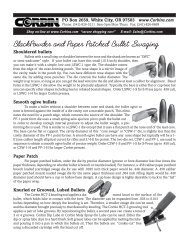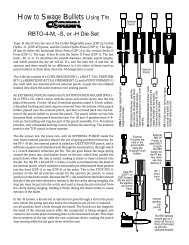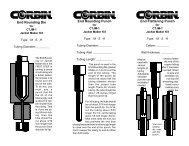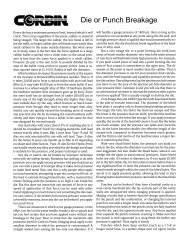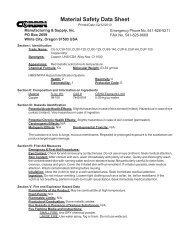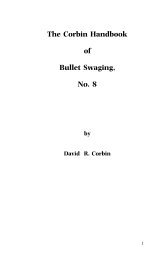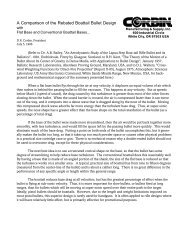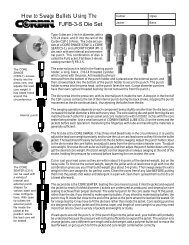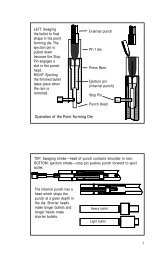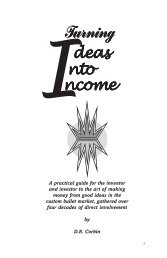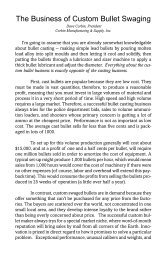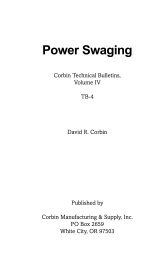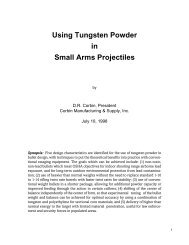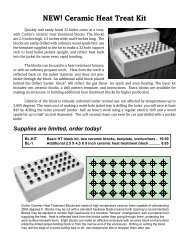HB-9 updated text (PDF) - Corbin Bullet Swaging
HB-9 updated text (PDF) - Corbin Bullet Swaging
HB-9 updated text (PDF) - Corbin Bullet Swaging
Create successful ePaper yourself
Turn your PDF publications into a flip-book with our unique Google optimized e-Paper software.
center of gravity and create fast, light but long projectiles. In short, just<br />
about anything that can be launched from a small arm, be it airgun, shotgun,<br />
rifle or pistol, and some kinds of machine guns and cannons, can be<br />
swaged and is considered a bullet.<br />
<strong>Bullet</strong> swaging (SWAY-jing, sounds like “paging”) is the process of applying<br />
extremely high pressures (from 15,000 PSI for soft, unjacketed<br />
bullets to as high as 150,000 PSI for solid copper bullets) to materials<br />
contained in a very tough, extremely well finished die, so that the material<br />
will flow at room temperature and take on the shape of the die and the<br />
ends of the punches.<br />
A die is a vessel to hold the pressure. A punch is a rod that fits into the<br />
hole in the die and seals off the end. If you refer to a punch as a die and<br />
vice versa, you may cause some interesting errors when placing orders.<br />
One of the first things to learn is the right names for the basic parts involved<br />
in the swaging process. You wouldn’t call a pistol a shotgun, would<br />
you? Probably not, or else you might get some odd-looking mail-order<br />
holsters!<br />
A business that is good at making swage dies probably will be buried<br />
in orders, with long waiting lists. Waiting up to a year to get your “die”<br />
and finding out everyone thought you wanted the “punch” that you asked<br />
for may be frustrating. Use the right terms and avoid this problem.<br />
In swaging bullets, you will always be putting a smaller diameter object<br />
(lead, jacket, or a combination of both) into a slightly larger die cavity<br />
or hole. Each step in swaging increases the diameter of the components,<br />
until they reach the final diameter in the last die. <strong>Swaging</strong> never<br />
reduces the diameter. You will only have stuck bullets and hard ejection if<br />
you try to push a slightly larger part into a slightly smaller hole. This is<br />
the difference between swaging and drawing. You never swage anything<br />
“down”. You never draw anything “up”.<br />
In drawing, you do push a larger part through a smaller hole, to reduce<br />
the diameter. This kind of die is a ring, not a cylinder closed on one<br />
end. The jacket or bullet that you are reducing is pushed through the ring,<br />
and is decreased in diameter when it comes through the other side.<br />
We use drawing to make longer, smaller caliber jackets from shorter,<br />
larger diameter ones. Also, within some narrow limits, it is possible to<br />
make a smaller caliber bullet from a larger one, although this degrades the<br />
quality of the bullet unless special conditions are observed. Usually the<br />
difference in diameters has to be within 0.006 thousandths of an inch<br />
when you reduce finished bullets by drawing. Jackets can be drawn much<br />
more than this, usually up to 30% smaller in one draw.<br />
11



